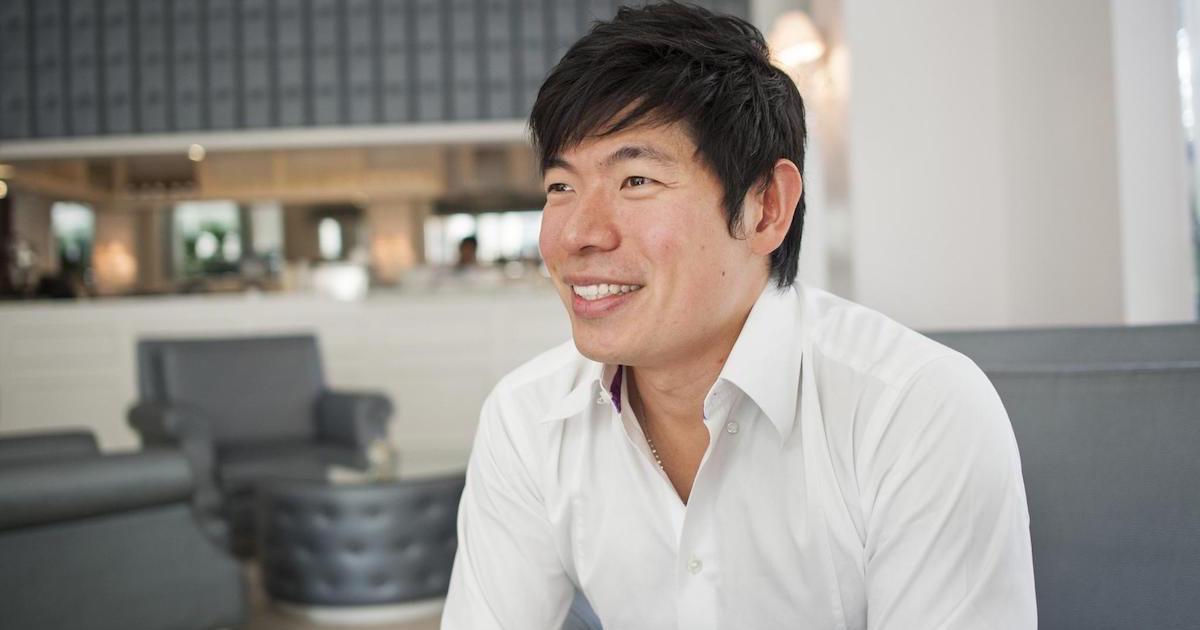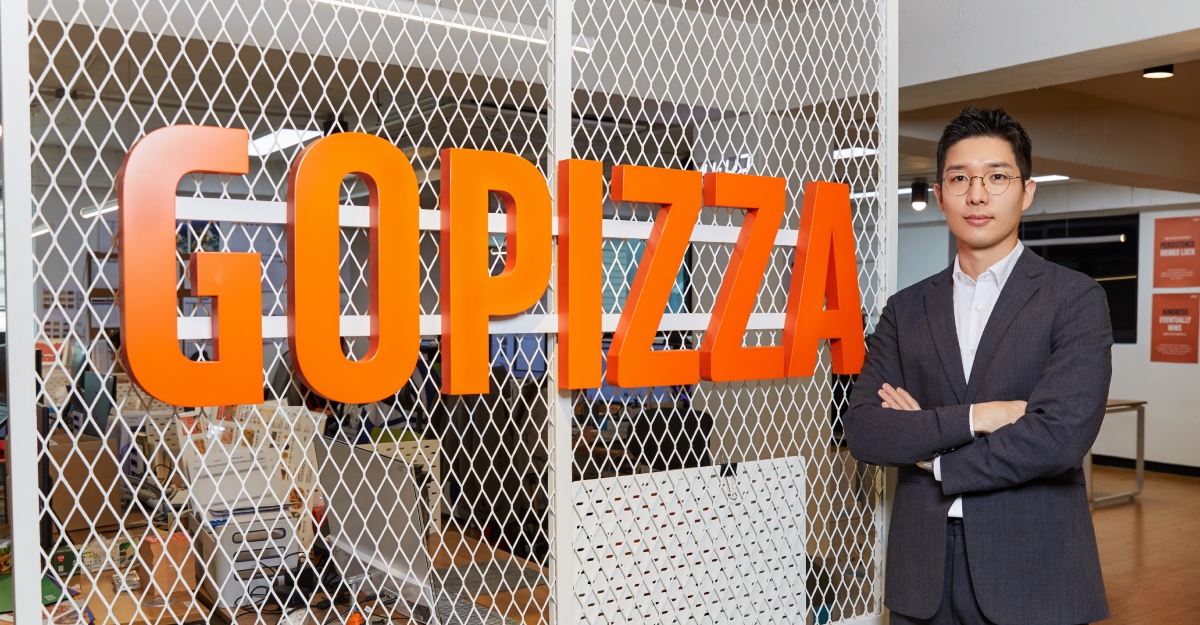Founded in 2012, Singapore-based online-to-offline mobile app company Grab might have made its name within the ride-hailing space in Southeast Asia, but it has loftier ambitions than that, driving home the message of its ‘everyday super app’ vision with new features aplenty.
Speaking to partners and reporters at a press conference on July 10, Grab CEO Anthony Tan and Jerald Singh, the Head of Product at the firm, made it abundantly clear that the company no longer sees itself as merely a company within the transport category.

The company started off as a taxi-booking app service in Kuala Lumpur, Malaysia, enabling customers to book taxis safely and conveniently.
In the following years, it entered Singapore, the Philippines, Thailand and other markets, and rolled out various features from providing users with the ability to book private cars, motorcycles and bicycles, to an e-wallet that works virtually and physically, as well as a food delivery service, a venture capital arm, among others.
Yesterday, it also launched GrabPlatform, an open platform that allows third party partners to tap on its resources through a suite of APIs and SDKs, and GrabFresh, a way for Grab users to buy groceries and get them delivered quickly.
Its position in Southeast Asia is unrivalled, especially after completing its merger with direct competitor Uber, which has now been deemed “anti-competitive” by a Singaporean watchdog.
In a press release, Grab noted that it has surpassed over 100 million mobile downloads, gained a presence in 225 cities and eight countries, and helped process over two billion rides so far.
Grab recently announced its “everyday super app’ vision, referring to its plan to become versatile and commonplace across sectors, akin to becoming the region’s WeChat and Meituan.
“Our goal is for one Southeast Asian app to offer all the daily essentials you need, anytime you need it, and even before you know you need it,” said Singh.
Why Would It Work In Southeast Asia?

While some outsiders might think of Southeast Asia as one unified region, despite perpetual efforts from the Association of Southeast Asian Nations (ASEAN), this is hardly the case.
Among most Southeast Asian countries, such as Singapore, Malaysia, Indonesia, the Philippines, Thailand and Vietnam, people speak different languages, consume different types of media, and commute differently.
Even within Indonesia, the market is deeply fragmented.
However, there are a few outliers that have somehow succeeded in being popular across the region.
One example is Facebook. With Indonesia being home to its fourth biggest community in the world, it becomes a service used by people of varying educational and socio-economic backgrounds across the region.
Another, we argue, would be Grab. Not only because it’s a ubiquitous service found in all first-tier cities in Southeast Asia, its features change according to the location, allowing for further localisation — a strategy claimed by the company to be one of its unique advantages while competing with its rivals, be it from home or abroad.
By allowing third-party partners to get on board its platform, small merchants benefit by gaining an increased reach to Grab’s massive audiences.
Grab also stands to benefit, both financially through a revenue-share model, and toward a higher user retainment since users would be able to use Grab for varied activities, all of which occur almost every day.
“Whoever we partner, do we offer value to them?” posed Tan, naming examples like Shopee and Ovo as partners that they already have onboard.
The Chinese Inspiration
“For us, we have an engineering centre in Beijing, and [it’s] a large one. Again as you can see, our vision is to drive Southeast Asia forward,” said Tan, when asked by a Hong Kong-based reporter if the firm would ever expand outside of the region and into Greater China.
He continued that Grab’s mission is to connect people and bring them closer.
He added that the firm has helped numerous small and medium businesses and entrepreneurs, and that’s something he wants to focus on.
While there is poverty in China, he shared empathetically, Grab needs to help Southeast Asia with its tremendous poverty and bring it to another economic reality.

“Do we take inspiration from China? We do,” he said in response to KrASIA’s question on whether the company looks to giants like WeChat and Meituan’s super app vision.
“We take inspiration from the US, globally, from India. I think the beauty is that everyone is so connected now, so everyone’s learning from each other.”
“I was just in the States and I was sharing in a conference as well. A lot of the US companies are seeing and they’re saying, “Wow!” he noted, adding that many of the companies he met had not thought of the ‘super app’ idea.
Of course, with its super app vision being implemented, Grab will come into contact with a treasure trove of information and insights, all of which could be used to generate more revenue.
Tan illustrated his point: for example, users who are hungry might use GrabFood to order some food from popular fast food establishment McDonalds, or take a Grab ride to the nearest McDonalds, or walk there but pay with GrabPay.
With GrabFresh, Grab could even let you know what items are needed to make a burger, added Tan.
In all three cases, Grab gets to understand the user on a deeper level — a level even an app like Facebook, which has not been as localised, wouldn’t be able to reach.
Competition Is Why It Exists
“Grab is never new to competition,” shared Tan in response to a question asking about entering the online grocery market when there are existing players.
“In fact we love it. That makes us innovate faster.”
Back in 2012, Grab was still an early-stage company.
Its press conferences were held in small establishments and cafes, unlike today with four offices across the country.
The fact that it raised US$10 million from a company like Vertex Ventures in 2014 wowed everyone in Singapore.
This was back when Rocket Internet-backed taxi hailing company Easy Taxi was still a competitor, alongside Uber.
In 2016, Easy Taxi, a long-forgotten name in the region, exited Southeast Asia.

In March, Grab announced its merger with Uber, effectively resulting in the latter’s halt in operations in this part of the world.
The deal was seen as anti-competitive by anti-trust agency Competition and Consumer Commission of Singapore (CCCS), which threatened the company with potential fines and a reversal of the merger.
“The truth is, it is very competitive. There are many competitors out there,” said Tan.
“Many of our competitors have announced that they’re coming in or they have already come in. I think the space of mobility will continue to have tremendous competition. In fact, we want more. So that we keep innovating for the customers.”
Some of these competitors that Tan referred to might include Indonesia-based Go-Jek and India-based Jugnoo and Ola, aside from local newcomers like Ryde.
“One thing we’re sure of is that we have complied with the law every bit of the way, and we will continue to do that. For us it’s very important that we continue to work with the government,” he said.
Previously and also concurrently, Grab is working with the government’s many agencies, from the Land Transport Authority to the country’s Tourism board.
Tan did express that he is confident that things will work out fine with regards to CCCS’ response that the deal was anti-competitive.
Sending The Right Signal
To date, Grab has raised more than US$5.1 billion from big names like Didi Chuxing, Softbank, GGC Capital, Vertex Ventures and more.
Post-merger, Uber also joined Grab as a board member.
But it is Toyota’s recent US$1 billion investment in Grab that has “created tremendous momentum”, said Tan as he believes the Japanese automotive giant’s faith in Grab sends the right signal to other investors and firms.
He declined to comment on Grab’s current valuation.
When asked on future IPO plans, Tan said that there’s no immediate need for that, but they are doing everything they can to make sure things are done with the right checks and balances.
In that case, if they ever wish to go for an IPO, they can always do so without fussing too much.
This article is written by Elaine and edited by Ben Jiang; and was first published on Kr ASIA.
Featured Image Credit: Financial Times








